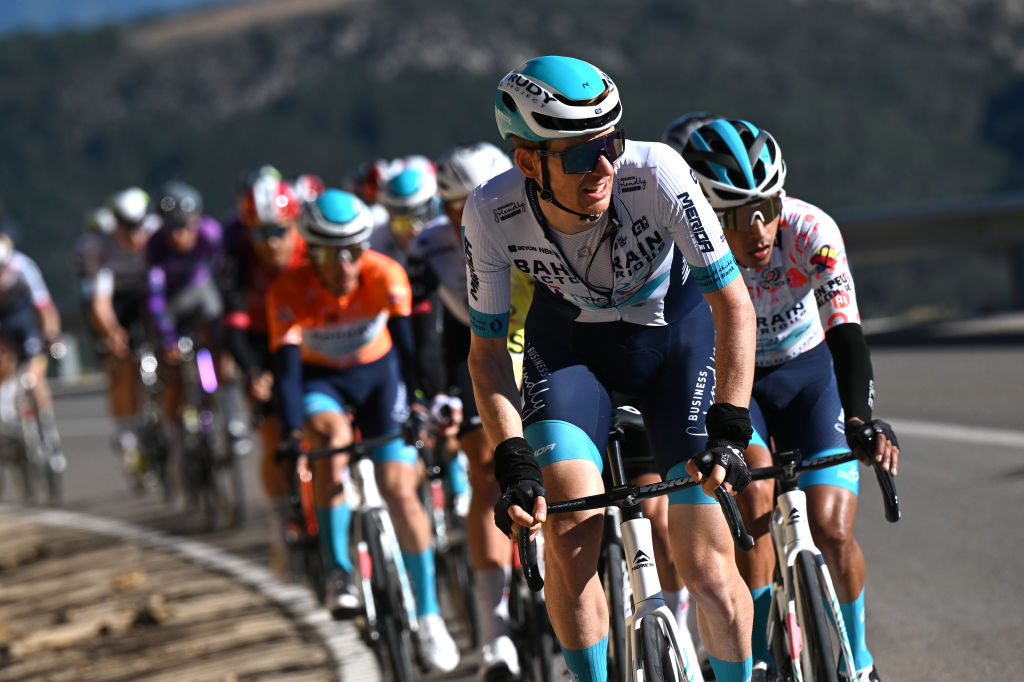Lawson Craddock Q&A: Ready for change at Cannondale-Garmin
23-year-old American moves to US team after two years with Giant-Alpecin
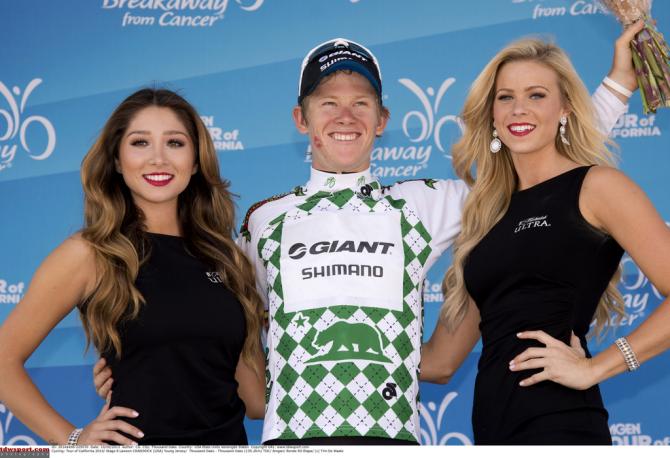
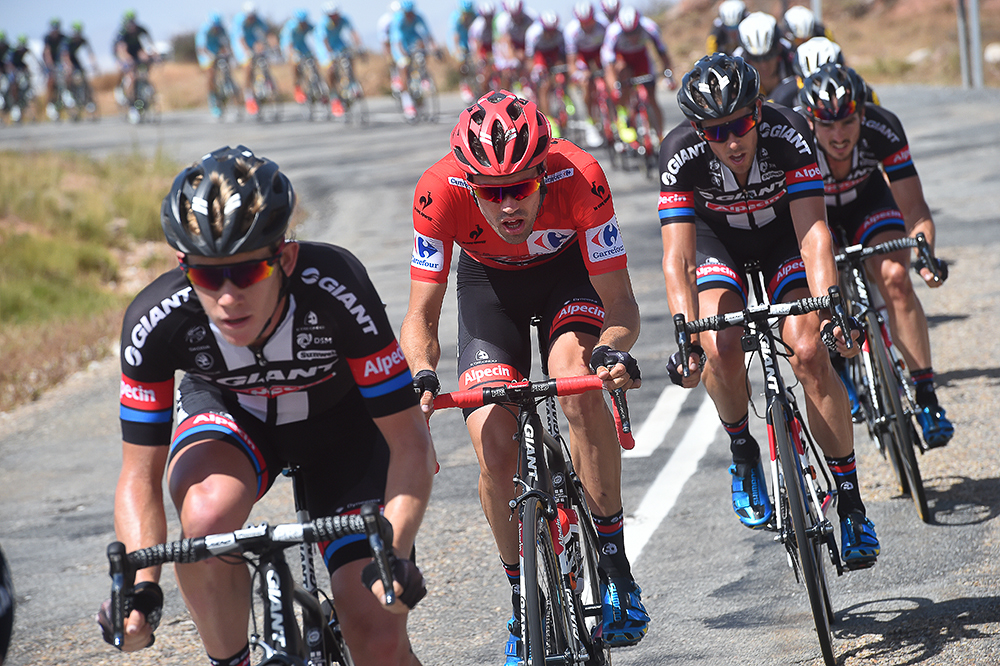
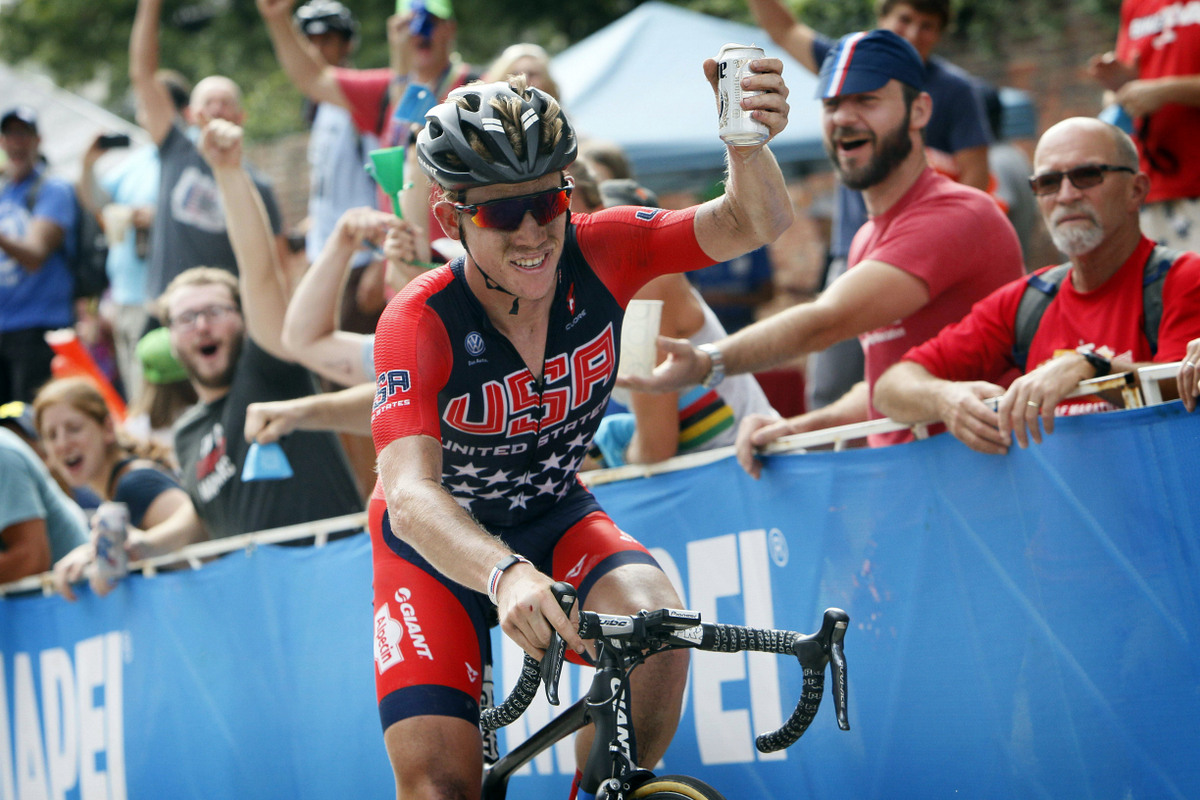
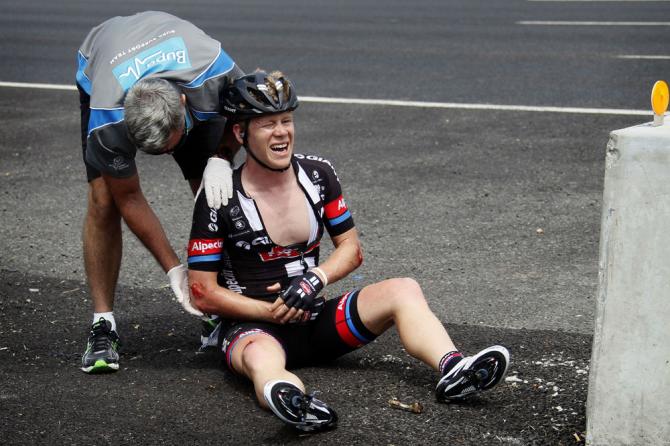
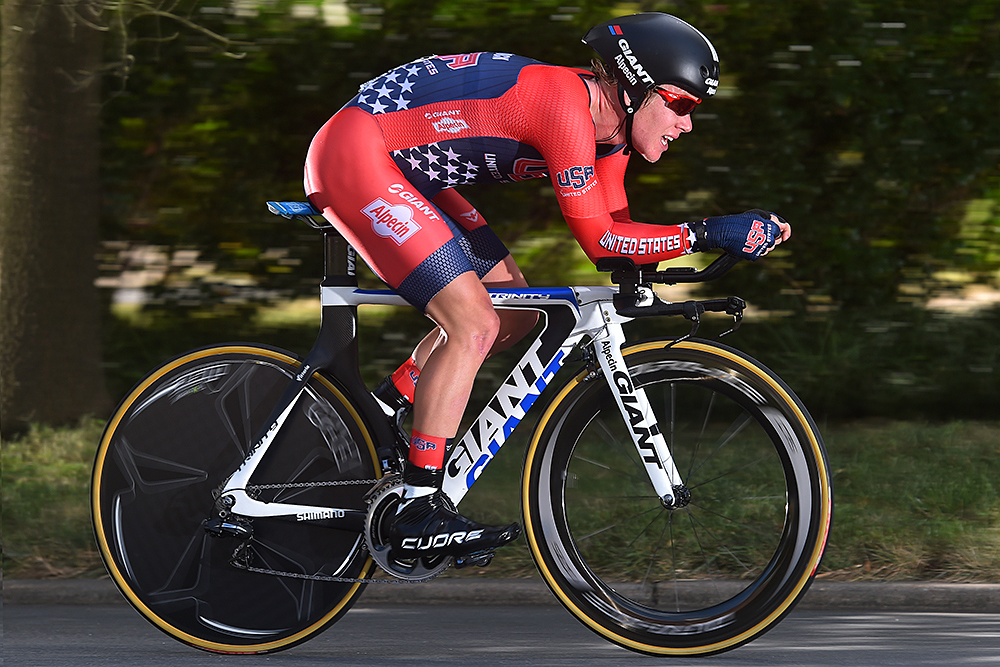
The offseason has brought a lot of big news for 23-year-old American Lawson Craddock, starting with his decision to move to Cannondale-Garmin next year after two seasons with Giant-Alpecin, followed by an announcement on Tuesday that he and his girlfriend of four years recently got engaged.
Craddock's first two years on the WorldTour have been a mixed bag, although this season ended well when he finished his first Grand Tour at the Vuelta a España, helping teammate Tom Dumoulin make an ultimately unsuccessful run at the overall win.
Craddock's inaugural year with Giant-Alpecin started well with a third-place overall finish at the Tour of California, followed by a sixth-place finish in the time trial at the Tour de Suisse. Things didn’t run so smoothly after that, however, as he abandoned the Vuelta during stage 14, starting a run of DNFs that carried through to the end of the year.
The 2015 season looked hopeful for Craddock, but he crashed at the Tour Down Under in January and suffered fractures to his sternum, manubrium, a rib and his left wrist. A long recovery at home in Texas was necessary, and Craddock returned to racing exactly two months later at the Volta a Catalunya.
Tour of the Basque Country followed Catalunya, with Fleche Wallonne, Liege-Bastogne-Liege, Tour of Yorkshire and Tour of California coming in quick succession. He ended the first half of his season at Criterium du Dauphine.
Craddock's early season didn't exactly light up the results column, with just one top-10 finish in California to his credit along with DNFs at Wallonne and Liege, but Craddock stormed back when he returned to racing again in August, finishing third during the Tour of Poland's Queen stage behind Sergio Henao (Team Sky) and Diego Ulissi (Lampre-Merida), and just ahead of Christophe Riblon (AG2R), Fabio Aru (Astana) and Mikel Nieve (Team Sky).
Craddock then rose to the occasion at the Vuelta when teammate Dumoulin became an unexpected overall contender, helping with the yeoman's work on the front to defend the leader's jersey. Craddock also gave Dumoulin a blistering lead-out into the uphill finish of stage 19, where the Giant-Alpecin leader add a few more seconds to his advantage over Aru.
The latest race content, interviews, features, reviews and expert buying guides, direct to your inbox!
The performances in the second half of the season earned Craddock the remaining spot on the US team for the World Championships in Richmond, where he finished 22nd in the time trial and 109th in the road race following an active start.
After a whirlwind start to his off-season with personal appearances and a Cannondale-Garmin training camp in Aspen, Craddock is finally back home in Austin, Texas, enjoying some well-earned rest and relaxation before preparation for the 2016 season ramps up in earnest. Cyclingnews caught up with Craddock earlier this week to talk about his 2015 season and the big changes ahead in 2016.
Cyclingnews: I saw that you are now engaged. Congratulations.
Craddock: It's really, really exciting. We're very happy. We celebrated four years two weeks ago, so it's exciting times.
CN: Were you in Aspen?
LC: Yep, I was up there in Aspen. It was good to meet everybody and get a feel for next year. It was really exciting, kind of the first step of 2016.
CN: Any first impressions about how this team is different from Giant-Alpecin?
LC: Yeah. It just seems like a really good fit for me, the way things are run and the team chemistry. It seems like it will be a really good fit. It's more of an American team, so that will be a really good for me, too.
CN: And you'll be back with some former teammates from the Livestrong and Bontrager days.
LC: I think that will be really beneficial, too. It gives you more of a familiar feel heading into it. So it makes it a lot easier to come into the team and really feel like you can be yourself.
CN: Can you talk a little bit about why you left Giant? Was it a better deal from Cannondale, or did they not make you an offer? What prompted the move?
LC: I had a great two years on Giant. I got along with everyone on the team really well. It's just that Cannondale came to the table, and in talking with the team and [former Bontrager teammate] Nate Brown I could see how the team worked and how it was, so it just seemed like, for me, it was a really good fit.
I loved my time on Giant. Being part of the best sprint train in the world gives you a lot of opportunity that you won't get anywhere else. It was very exciting to be a part of that and we had a lot of success, and I became really good friends with a lot of the guys on the team. For me it was just time to take the next step in my career where I can hopefully start getting results and really proving my potential. That was the most important thing I was looking for in 2016 and beyond. It just felt like in my heart that Cannondale was the best place to do that.
CN: Looking back at the 2015 season, obviously you got off to a pretty rough start at the Tour Down Under. Then it seems like it took you awhile to get back into the flow of things, but then when you did you had some good results like third in Poland and a pivotal part of Tom Dumoulin's Vuelta run. Looking back, how would you grade yourself this year?
LC: One thing I don't think I realized when I was coming back from the crash at Down Under, I thought I was going to be able to come back and I'd be fine, no problem, that I'd be able to be good almost immediately. And that just wasn't realistic to expect that. I pretty much took another off-season in January. You may feel good for the first race or so, but you realize quickly how much benefit you get from the winter training and the long hours in December and January. You don't have that base anymore. For me that was the biggest thing: once you start racing it's hard to – you know you're racing almost every weekend of the month – it's hard to get a solid couple weeks of training. And in this sport once you get behind the eight ball it's pretty tough to come back.
So it took awhile and I felt like I was ready to take my shot again in Dauphine, unfortunately I didn't have a lot of luck there, and some of that was my own, too. It really wasn't until Poland when I started racing again, and I think after that I was able to really show what I'm capable of doing all year.
CN: Any highlights stand out from the 2015 season? Anything stand out that you were especially proud of?
LC: I'd say pretty much the whole second half of the year was a highlight for me. Being third on the hardest stage at Poland, that kind of shows me what I've always known: that I can compete at the highest level of the sport and I can be right there with the best. It wasn't like I just lucked out on the day and just happened to get third. I raced smart and with the help of the team the entire stage. I just relied on my strength to really be a part of that stage. That was a pretty big turning point for me.
Then coming back to the Vuelta and really competing all the way to the final stage and being a crucial part of our success there, that was also a big confidence builder for me. The first Grand Tour [at the 2014 Vuelta when Craddock failed to finish, ed.] didn't go so well and you really start to doubt yourself. So I was really happy with how that turned out.
And then obviously racing Worlds on home soil was a truly an unforgettable experience. I was really lucky to get that opportunity through USA Cycling to compete there. It was huge.
CN: Your performances at the Vuelta and in Poland likely had a lot to do with your getting picked for that team.
Yeah, for sure. It was good. I came back for the second half of the year and I had a lot of luck. I really dialed down. I went up to the altitude camp with the team and I turned the focus up during the time I was up there. For me, I knew I was capable of it, but just putting it all together and seeing the results of your actions is a really good feeling.
CN: When we talked before the season started you said that getting another crack at the Vuelta and finishing was a big goal. So it seems you not only did that, but you played a big part in the team's race. I think it was stage 19 when you led Dumoulin into the final climb and he was able to get some distance on Aru and add to his advantage. You weren't just surviving the Vuelta, you were right in the middle of the action.
LC: That stage was definitely a really cool experience for me, too, just being up there at the very end of the race and to be able to really compete with the top guys. That was a really cool experience for me. I was fortunate for the opportunities that Giant gave me. They put me in a position to succeed and to help the team succeed. It was the accumulation of a lot of hard work I put in with myself and the team over the previous couple of months.
CN: What did you learn from having your team leader leading a Grand Tour like that and being part of the defense? Did you take anything away form that that you wouldn't learn if you were just hunting stage wins?
LC: Yeah, for sure. You really see what it takes to compete for three weeks. I think it is a huge difference. You see a lot of guys in a Grand Tour who might focus on a couple of stages and all the other stages they're just kind of tail-gunning it and kind of surfing the peloton. You get into a routine where you're going into the stage where you don't really have the mental goals or anything.
So being there and really learning what it takes to focus 21 days in a row was pretty big for me. It was good, but it was also mentally draining because there are five our six hours a day where you're physically exhausted but you have to think about every single pedal stroke that you're taking and what you could be doing to save energy or where in the peloton you needed to position yourself. So it was a brutal three weeks, but it's great to be out the other side. It was a really rewarding experience.
CN: There's no hiding when you have a teammate in the leader's jersey.
LC: Exactly. You realize it's one of the top races in the world and you have a chance to win. At that point there's no faking it. You have to give it your all and hope that's good enough.
CN: Heading into next year have you and the team laid out a program yet? Do you have a program in mind as far as what races you want to target and where you want to put your efforts?
LC: I'd like to try and get a couple more results throughout the year, but my main goal is to really be more consistent. Hopefully if I can stay healthy and not nail a massive pothole again and have to go to the hospital, then hopefully I'll be able to do that. I think another good 'Camp of Champs' here in Austin in December will be crucial to set up another good consistent spring campaign for me. I'll talk to Cannondale and come up with a good program to utilize my strengths but also learn from the top guys and I think just try and improve for the future.
CN: The team appears to be going through a rebuilding phase after losing all of the original guys. Is there a sense of that among the new roster?
LC: At the team camp in Austin it was good because there are a lot of new guys coming in and you don't have any cliques within the team, so all the new guys are hanging out and meeting everyone. I think it really helps with the team chemistry. I think that's a really underrated part of the sport: getting along with your teammates. Everyone races a little better when they're putting it all on the line for somebody that they actually like. So I think that's really big.
It was just really exciting to be there and get to know everyone, and I think we all have the same ideas about laying it all out on the line for each other and trying to get the best results possible.
CN: So have you set a date for the wedding?
LC: We kind of hit the ground running. We got engaged Friday, and then yesterday we were already looking at venues. So it's all happening quickly, but with life as a cyclist you have limited time to get these things done. We're hoping by next off-season just because it's a beautiful time of year in Texas and that way a lot of our friends can make it. So hopefully late October or early November.
Growing up in Missoula, Montana, Pat competed in his first bike race in 1985 at Flathead Lake. He studied English and journalism at the University of Oregon and has covered North American cycling extensively since 2009, as well as racing and teams in Europe and South America. Pat currently lives in the US outside of Portland, Oregon, with his imaginary dog Rusty.
